In August of 2013, upon completing four weeks of a volunteer placement with La Fundacion Aldeas de Paz in Santa Elena de Uairen, Venezuela, I was presented with a unique opportunity to visit one of the country’s most famous natural landmarks.
I had two options: I could either brave rickety planes, tiny river boats, and a hike through the jungle on a 3-day trip to Angel Falls, the world’s tallest waterfall, or put my hiking prowess to the test on a brutal 6-day trek to the top of Mount Roraima, the country’s largest table mountain.
Because Venezuela doesn’t usually find itself on travelers’ lists of must-see countries in Latin America (the relative political instability and unfavorable statistics of crime and violence compared to the rest of the continent may have something to do with this), I was excited by both of my prospects because either one would be an experience not everyone and their mother would be boasting about when I hopped on the Gringo Trail later that month.
I’d gone to Venezuela thinking with utmost certainty that Angel Falls would be THE tourist destination I’d squeeze in after volunteering and, initially, didn’t even know Mount Roraima existed as an option. I didn’t have time for more than one trip before my flight to Colombia, so after learning of Mount Roraima and a few other options (including the Orinoco River Delta and Los Llanos, both excellent for wildlife spotting), I suddenly had a tough decision to make.
The Orinoco River Delta was a fleeting thought when I learned it was home to pink river dolphins, but being so far from where I was based made it a less realistic option. I easily narrowed my choices back down to Angel Falls or Mount Roraima.
I soon realized that for most of the other volunteers, if seeing these natural wonders was a matter of choosing one or the other, Mount Roraima nearly always won. I watched several groups stumble back to the foundation grounds after the trek looking like they’d just been to war (and lost) and wondered to myself what could possibly be so appealing about this tepui, this table mountain named Roraima.
They were sore, they were exhausted, they were battered, bruised, and blistered; they developed bulging legs and feet from the severe edema that resulted from walking, hiking and climbing for up to 7 hours a day for six straight days.
Equal parts alarmed and intrigued, I asked a fellow volunteer for some final clarification. “Angel Falls or Roraima?” The answer I received was simple enough: “Roraima. There’s absolutely nothing like it.”
Then, he showed me some photos. The discussion ended right then and there; my decision was made–I was climbing Mount Roraima.
With some luck, three others from the foundation were willing and able to do the trek at the same time as me, so we arranged it in town with a man from Caracas named Francisco who ran a tourism agency and gave discounts to volunteers from Aldeas de Paz. We got an incredible price for the tour, and after hammering out some details with him (one of our members, John, is a vegetarian and had to make sure he’d be fed adequately, and I had to make sure we’d have plenty of coffee every day of the trek; he assured us both would be taken care of) the day of our departure arrived before we knew it.
Climbing Mount Roraima, Day 1: The Easy Day
The morning we began our trek, we met Francisco and our guides in Santa Elena around 9am. I’d packed my bag with the bare essentials since we’d each be carrying our own clothing, snacks, water, sleeping bag and sleeping mat. The advice I’d been given from other volunteers was to bring enough clothes to always have something dry to put on in the morning (most importantly dry socks) and plenty of warm clothes to sleep in, as nights on the summit could be downright freezing in stark contrast to the heat of the days.
We loaded our things onto the Land Rover as we made acquaintance with our guide and porter, two locals and native Pemón (a people indigenous to Venezuela, Brazil, and Guyana) and also brothers. The older of the two and the official guide, José, was 21; the younger of the two, our porter Roni (who’d be carrying six days’ worth of food and all necessary cooking gear and tents) was a mere 15 years old. We greeted our 5th hiking companion as well, a tall, amicable, and permanently grinning Brazilian named Eloir.
On our way out of town, we made a final brief pit stop at a liquor store which befuddled us at the time, but hey, we were just along for the ride. Francisco handed us each a cold beer through the window (even the 15-year-old porter, who politely declined) and bid us farewell.

Finally on our way to the Pemón village of Paraitepui, our starting point, we cracked open our 10am beers and shouted a collective “Salud!” One of us may or may not have laughed nervously and wondered what she had just gotten herself into, but the feeling may or may not have passed with a few sips of Polar Ice.
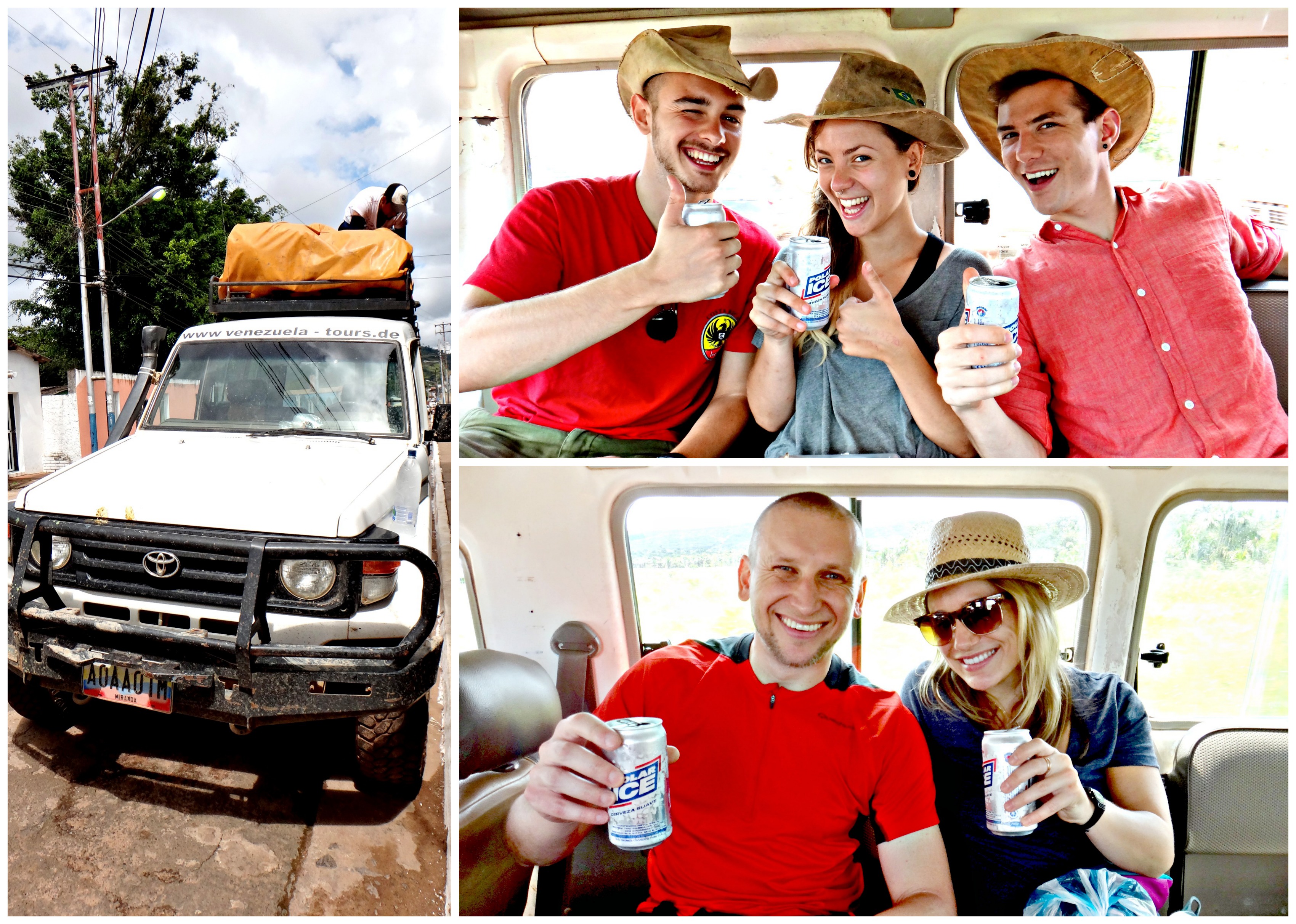
Upon arrival at Paraitepui, we had our first in a series of basic-but-impressive-considering-the-circumstances meals, signed in as guests of the National Park, and were informed of the strict rules prohibiting the removal of ANYTHING from the park. Not only would we receive a large fine if we tried to lift even the tiniest stone, but the guide would be personally responsible for carrying it all the way back to its place of origin. Our guide implored us to respect the rule.
The first day of the hike would only require 3-4 hours of walking, depending on our pace, to reach the first campsite. The overcast weather as we set out was rather favorable, as we were crossing nothing but open savannah that would otherwise provide no reprieve from the beating sun. The only unfortunate part was that we could not see Roraima in the distance as the mountain was entirely covered by rain clouds.
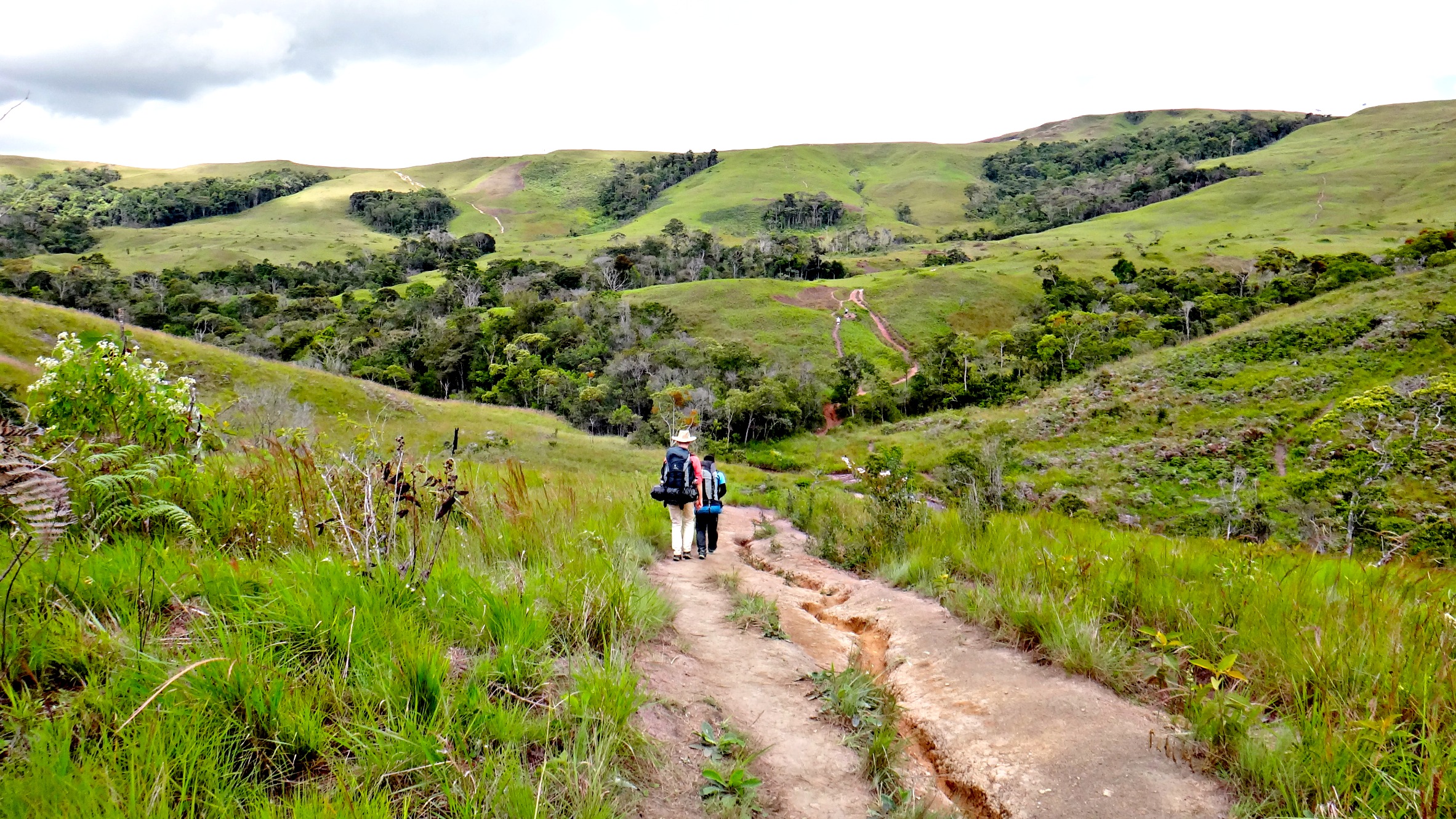
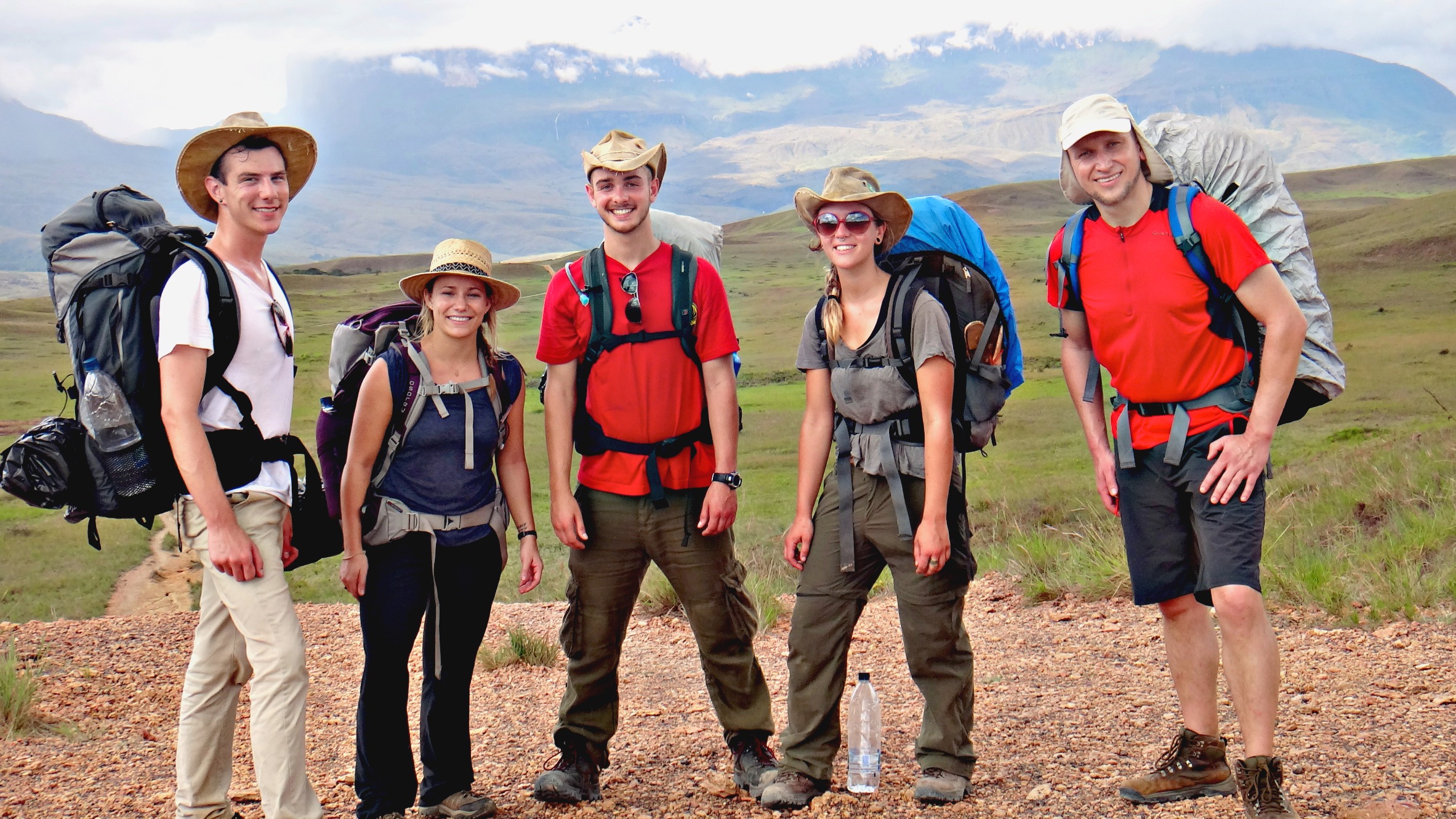
The sun came and went, light rain came and went. We stopped at the halfway point and our guide provided a snack of creme-filled cookies, which we happily devoured.
We reached the camp in precisely the amount of time estimated, about 3.5 hours. We wandered to the nearby river to fill up our water bottles and attempt a quick “shower.” The water was too cold for me and the sun was going down which meant the temperature would soon drop, so I gave my face and armpits a splash and called it a day.
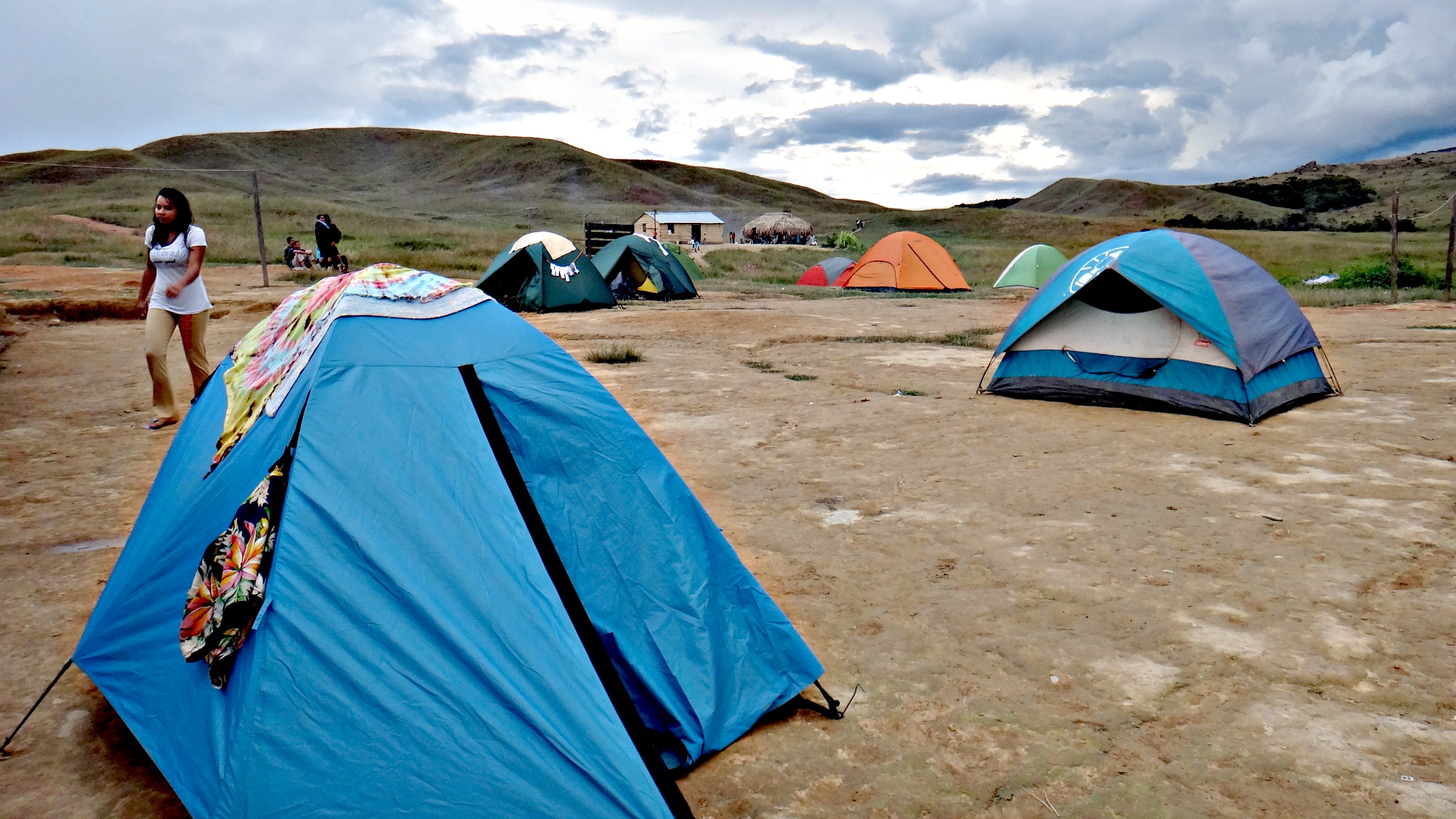
Our camp was very basic, nothing more than a clearing and a handful of mud huts. There was no electricity after a certain hour, so we relied on our headlamps to illuminate our pre-dinner conversations. After a filling spaghetti dinner, we watched fireflies dance all around us and a lightning show that indicated an oncoming storm. We crawled into our tents no later than 10 or so, knowing full well the physical exertion would only get more intense in the days that followed.
Day 2: Uphill From Here
We awoke on day 2 as the first rays of sun began warming the tent around 6am. A glorious breakfast of fried arepas with cheese was served at 6:45 along with hot chocolate, NOT coffee as I had very specifically requested. I decided against saying something but a small part of me died in anticipation of the caffeine withdrawal headaches that would set in later that day. We packed up the last of our things after breakfast and started our hike by a very respectable 7:15.
In less than 5 minutes we approached our first obstacle, the first of two rivers we’d have to cross that day where we had “bathed” the night before. The Río Tok wasn’t the mightiest of rivers, but it was just fast enough to look a bit daunting, especially while carrying a large pack. We removed our shoes but kept our socks on for traction as instructed, shimmied our pants up as high as they’d allow (mine didn’t go quite high enough) and teetered through the water one-by-one, our guides effortlessly prancing from rock to rock to provide support along the way. I tossed my shoes to the opposite bank to free up both hands in case of a fall, but made it across without incident. Since we’d be crossing a second river within the hour, we stuffed our drenched feet back into our shoes and continued on.
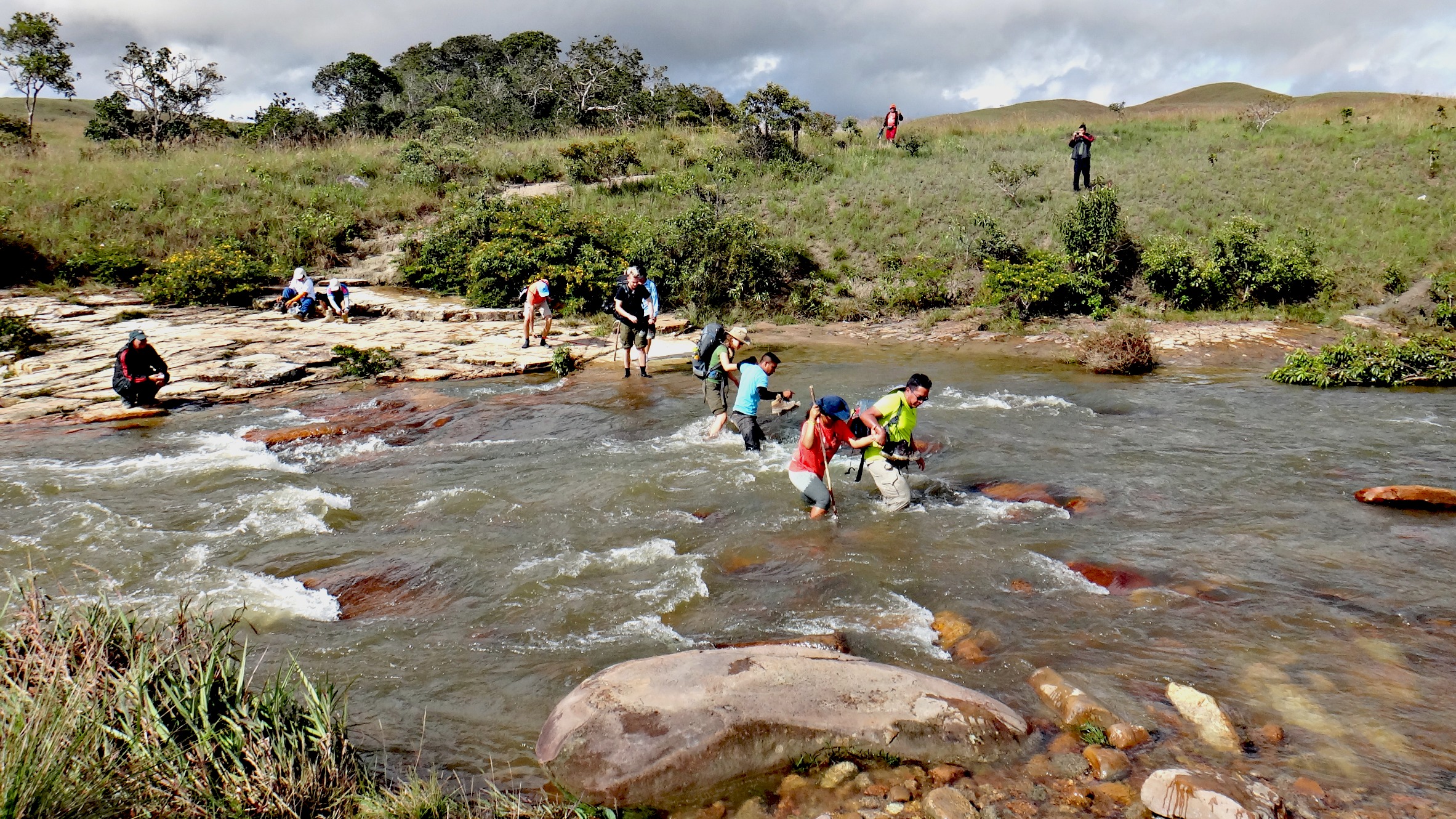
We came to the second river crossing, el Río Kukenan. This river was easily four times as wide as the last and twice as deep at some parts. I silently thanked Francisco for the plastic bag liners he’d given us to keep our belongings dry inside our backpacks and attempted to pump myself up for the task at hand. Finding the largest and most stable rocks to walk across was no easy feat. Our guides once again pranced across the river nimbly to drop off what they were carrying and came back to assist the rest of us. I ended up waist-deep in the rapid current and at several times was nearly pulled backward by the weight of my pack. I managed to keep from panicking just long enough to reach the opposite shore where I became acutely aware of my heightened pulse and rapid breathing; adrenaline was coursing through my veins. Having had a few scary experiences in rivers as a teenager, rivers and I are not exactly on great terms. I was ecstatic to have completed this part of the trek and to leave it behind.
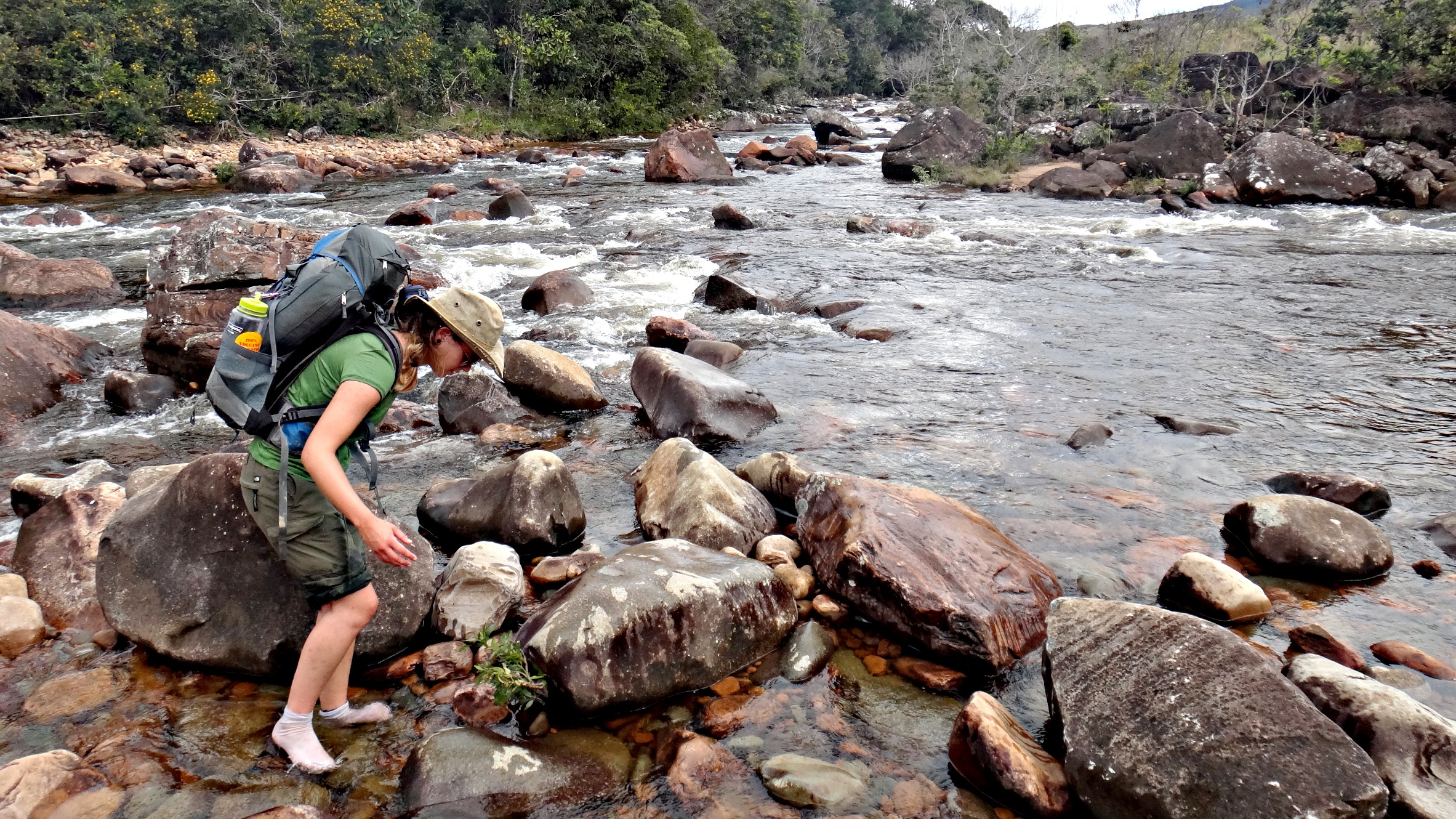
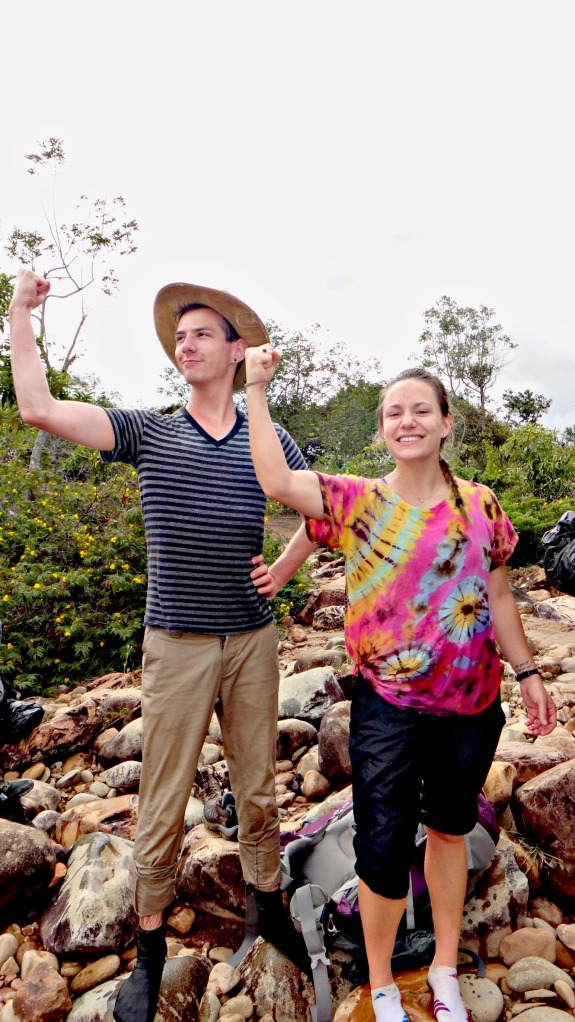
Up, up and up through savannah we went as we inched closer to the base of Mount Roraima where we’d find camp number two. We attempted to take our minds off the burning we were now feeling in our legs as we ascended by playing various word games; it provided entertainment, but relief, not so much. The weather was still overcast and Roraima was still hidden except for the very bottom of the limestone cliffs that sprung up from the base. The immense size of the mountain was becoming apparent and our excitement grew accordingly.
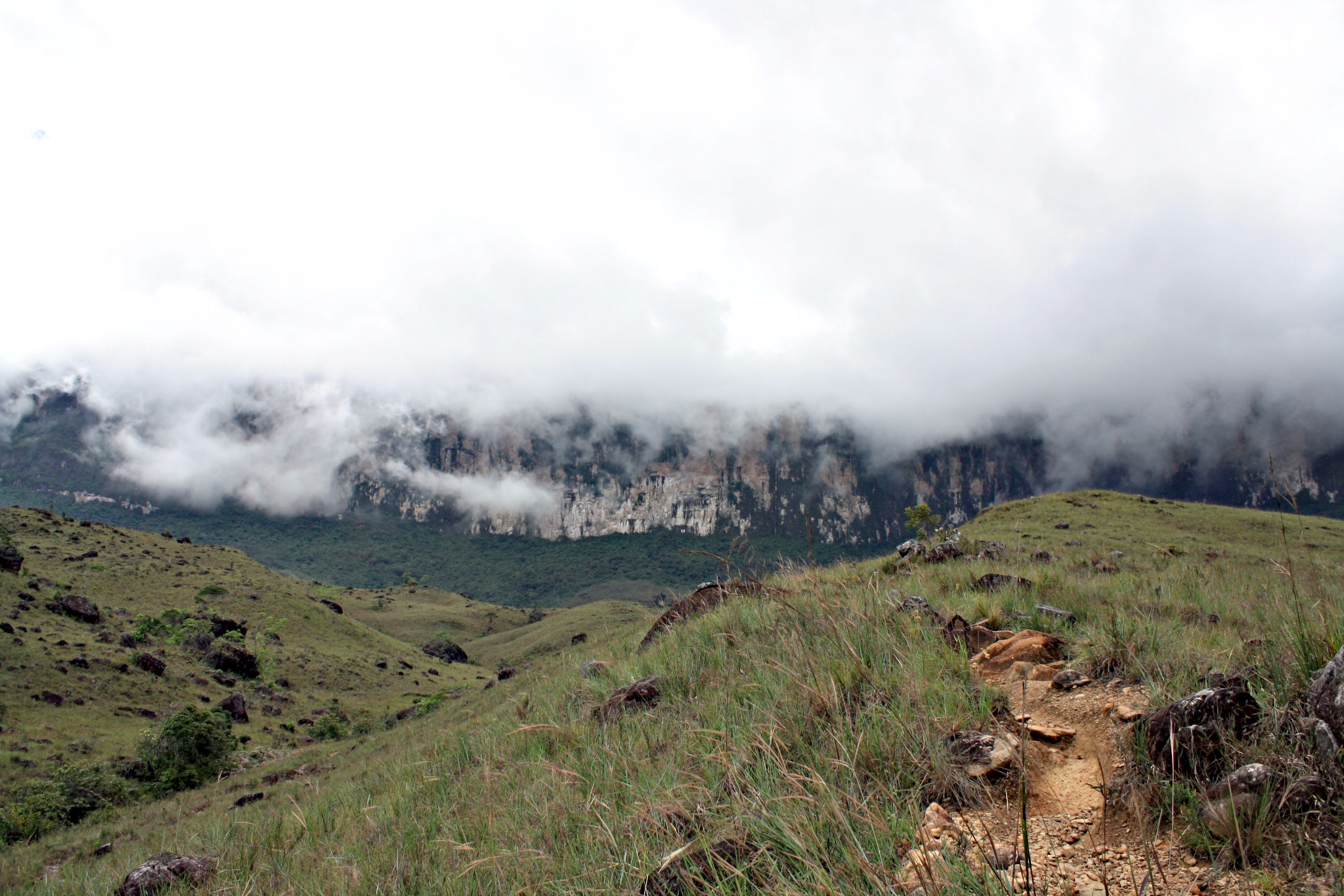
We arrived at “base camp” after about 5 hours of climbing. Since we’d gotten such an early start on the day, it was only lunch time and the rest of the afternoon we were free to relax and take in the beauty of the mountain as the rain finally relented and we were given our first glimpse of the impressive beast we were going to attempt to summit the next day.
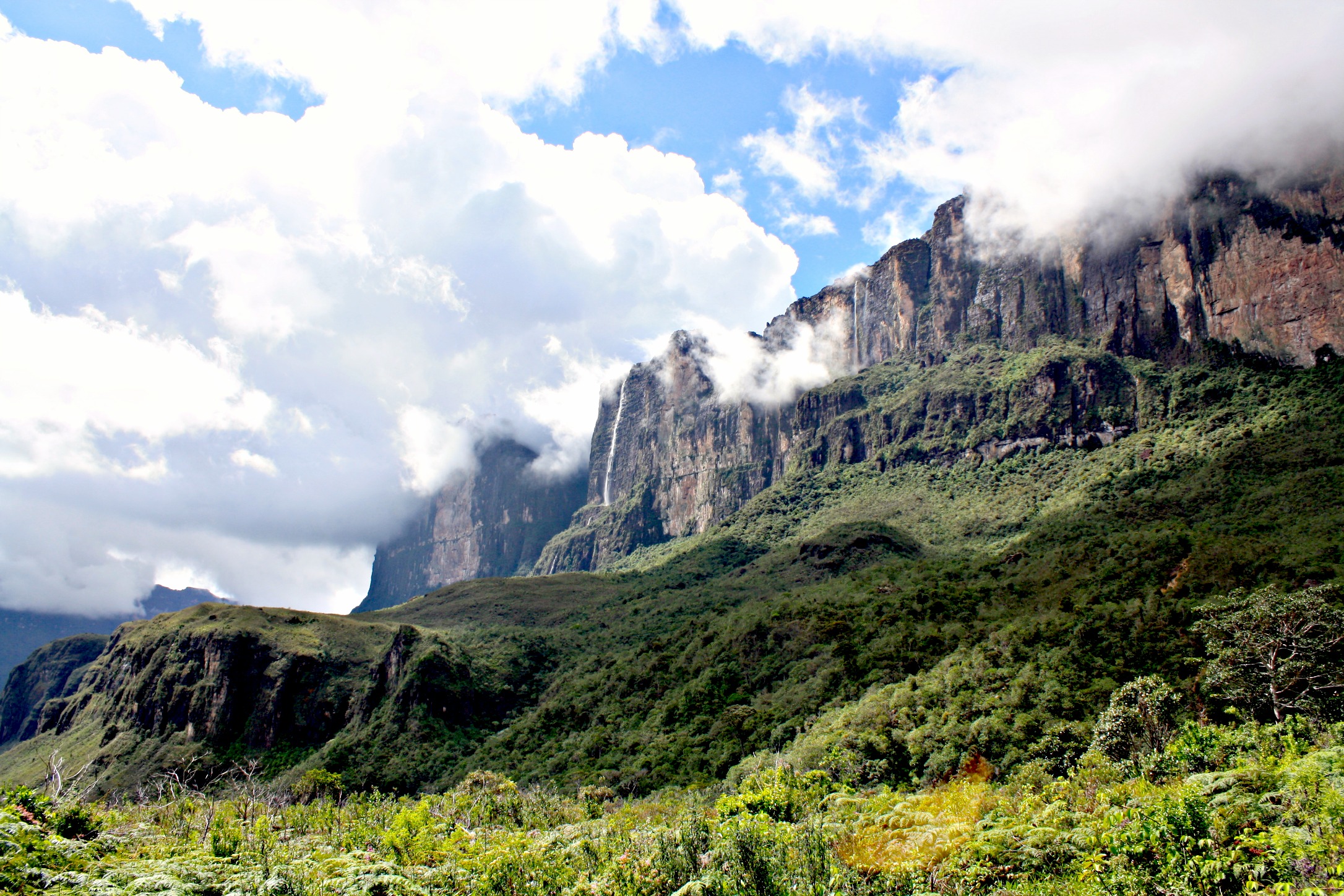
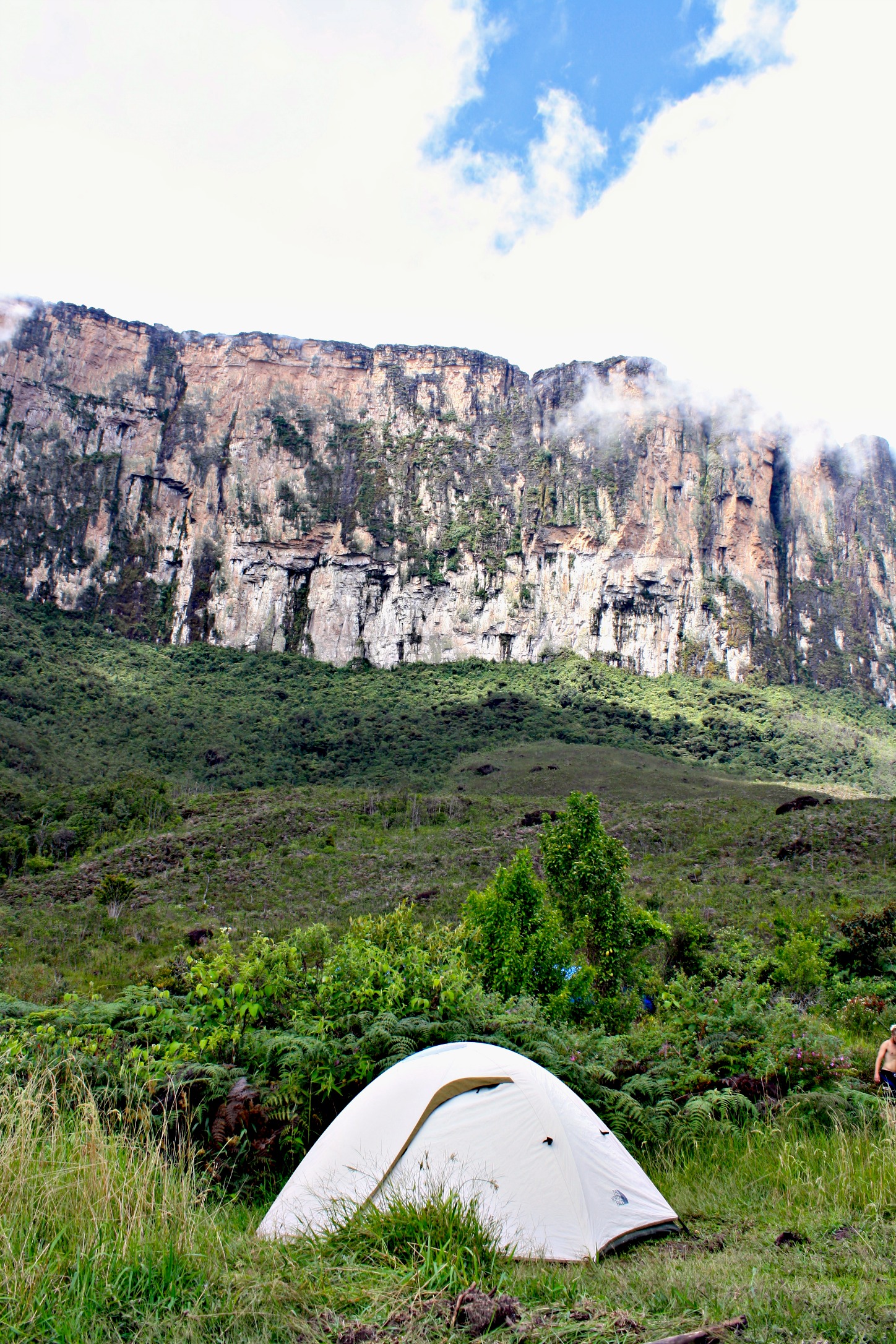
The views from base camp were absolutely breathtaking. The rain created several temporary waterfalls that spilled over the sides of the mountain creating a look very similar to Angel Falls. We were also right next to another large tepui, Kukenán (like the river) which was stunning in its own right. Everywhere we looked there was beauty.
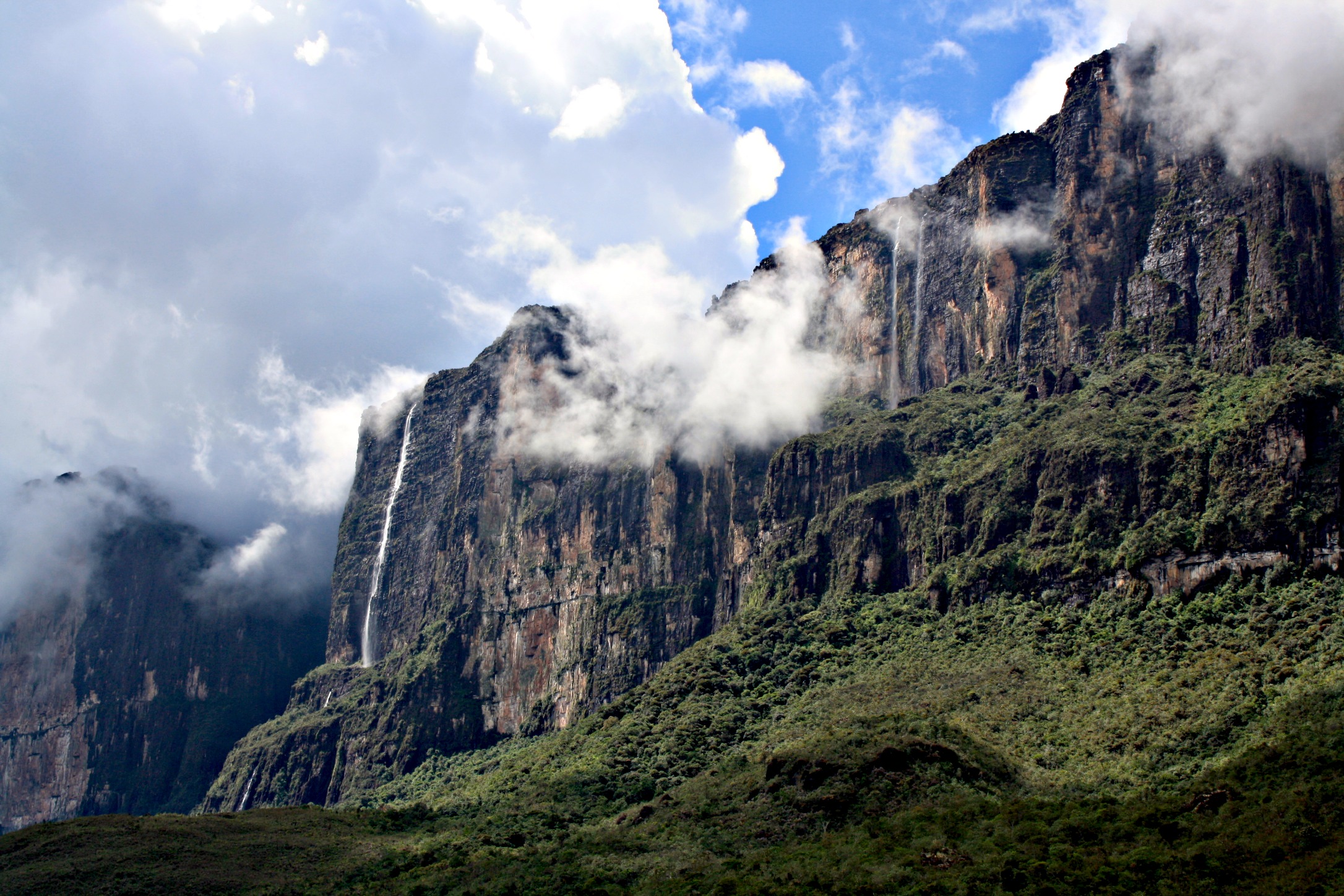
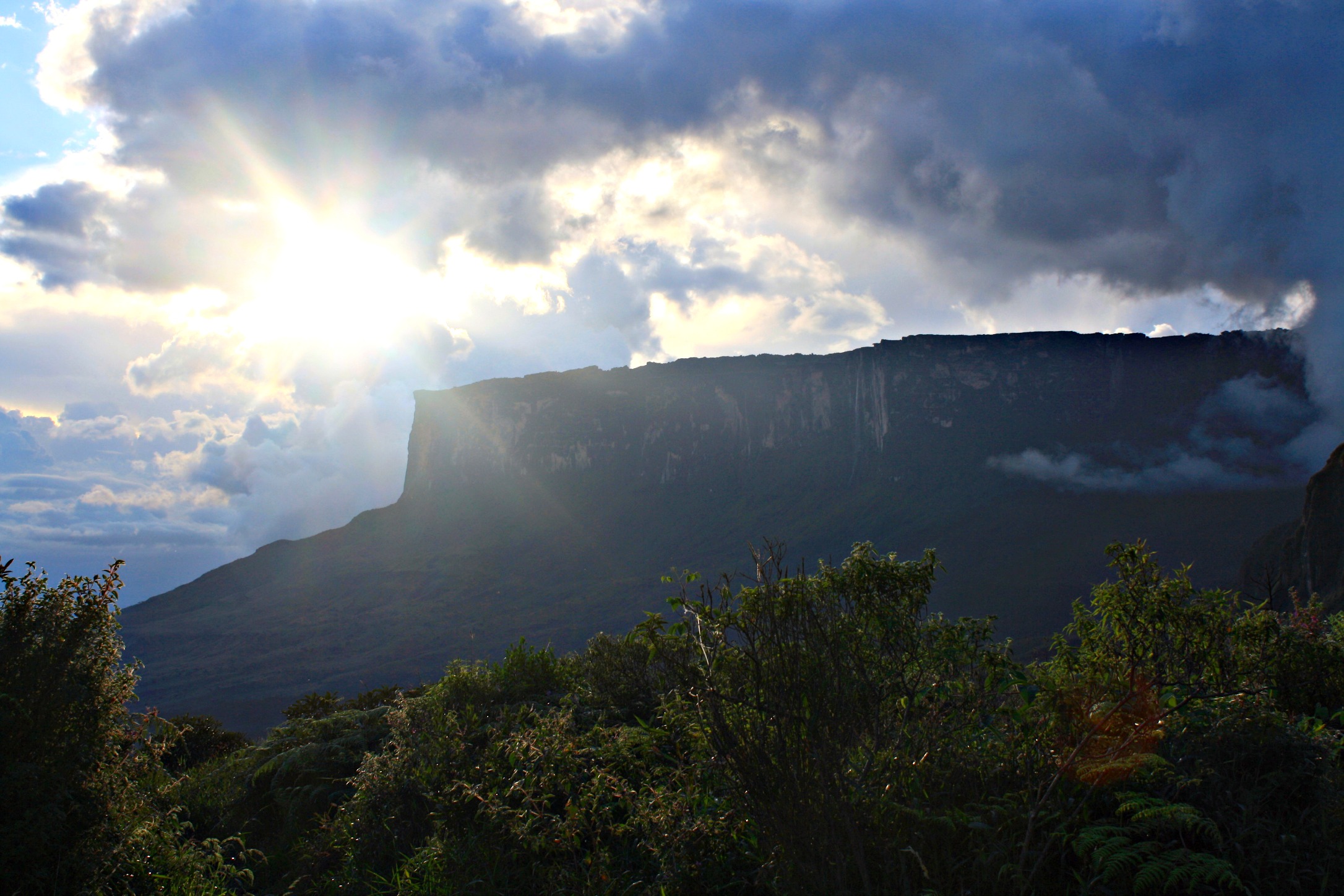
After bathing in a river so cold it caused instant numbness, we warmed ourselves in the sun and prepared for an early bedtime. We bundled up for the cold night that was settling in and ate another lovely dinner around 8pm. With the disappearance of the sun came the emergence of dinosaur-sized mosquitos, but luckily the only exposed skin I had to defend was my face, as I was swaddled head-to-toe like a newborn to keep warm. We retired to our tents after a few short stories kindly read aloud to us by John, the only one with enough foresight to bring a Kindle. I fell asleep that night wearing every last piece of dry clothing I had.
Day 3: Reaching The Summit
The third day of the trek was widely regarded by Roraima veterans as the most difficult day of all. That day, we would have to hike through dense jungle to reach the entrance to La Rampa, a natural ramp up the side of the mountain that serves as the only non-technical access route to the summit. The path to La Rampa and La Rampa itself were much steeper than anything we’d climbed so far.
Luckily, we awoke that day to the most beautiful clear blue skies we’d had yet, providing us with unbelievable views of the mountains and of La Gran Sabana (the great savannah) down below.
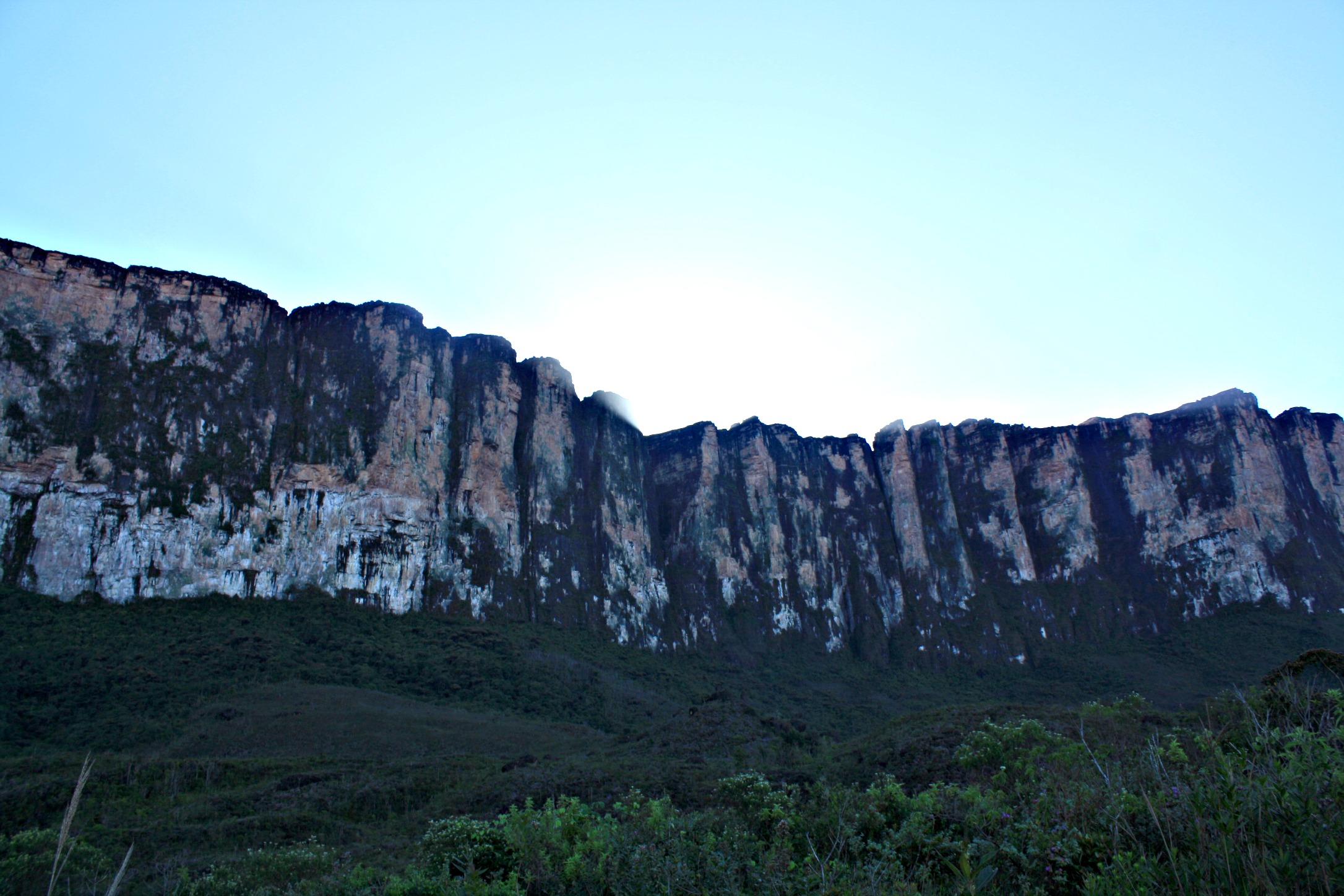
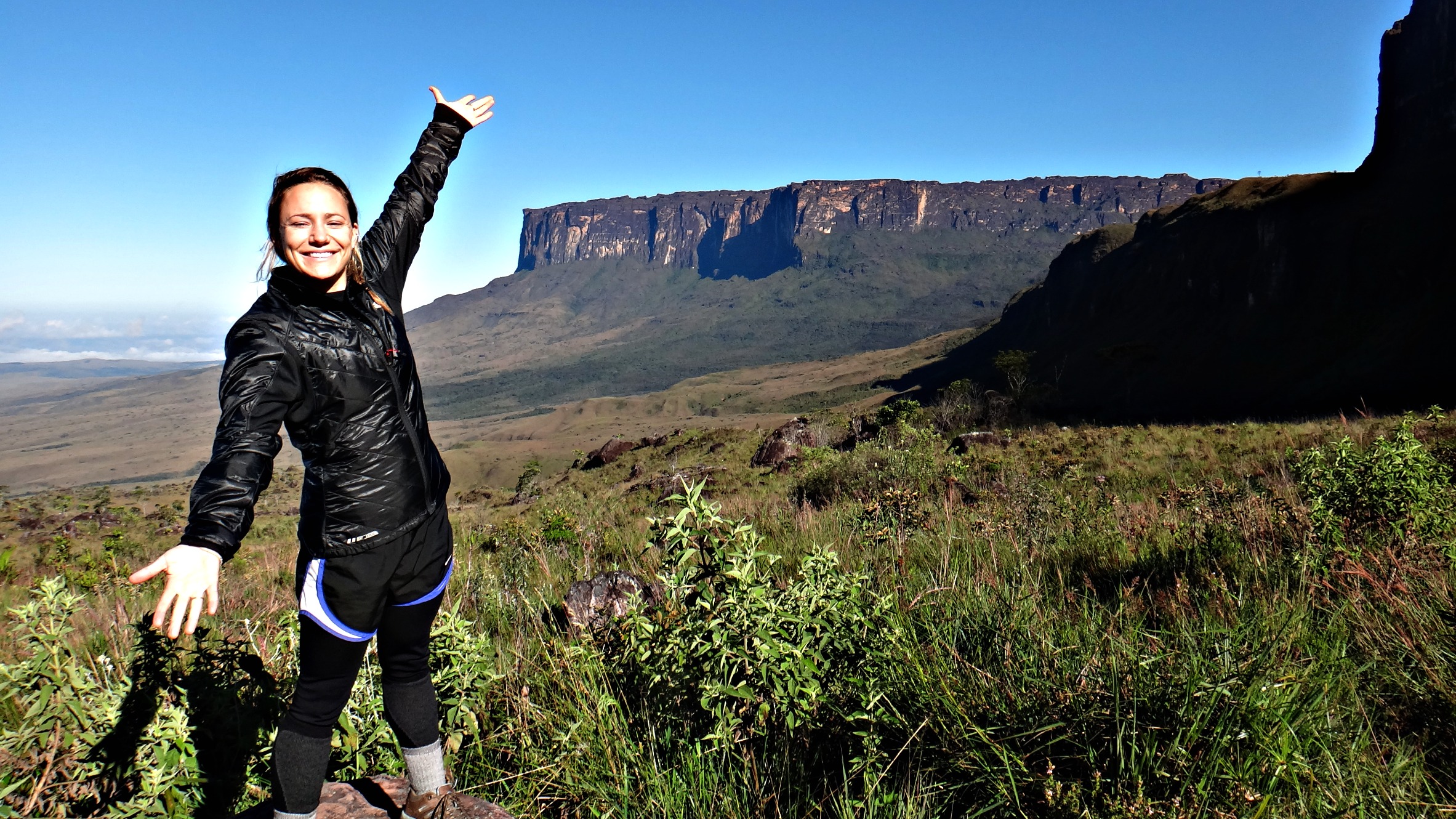
As we ascended, we clamored over rocks, streams, branches and roots, while the view of the savannah got more and more impressive. We stopped often for breaks and creme-filled cookies to keep morale high. We emphatically quoted various parts of the Pixar movie Up (which was based on Mount Roraima and Angel Falls), doing our best snipe impressions in between shouts of “Adventure is out there!”
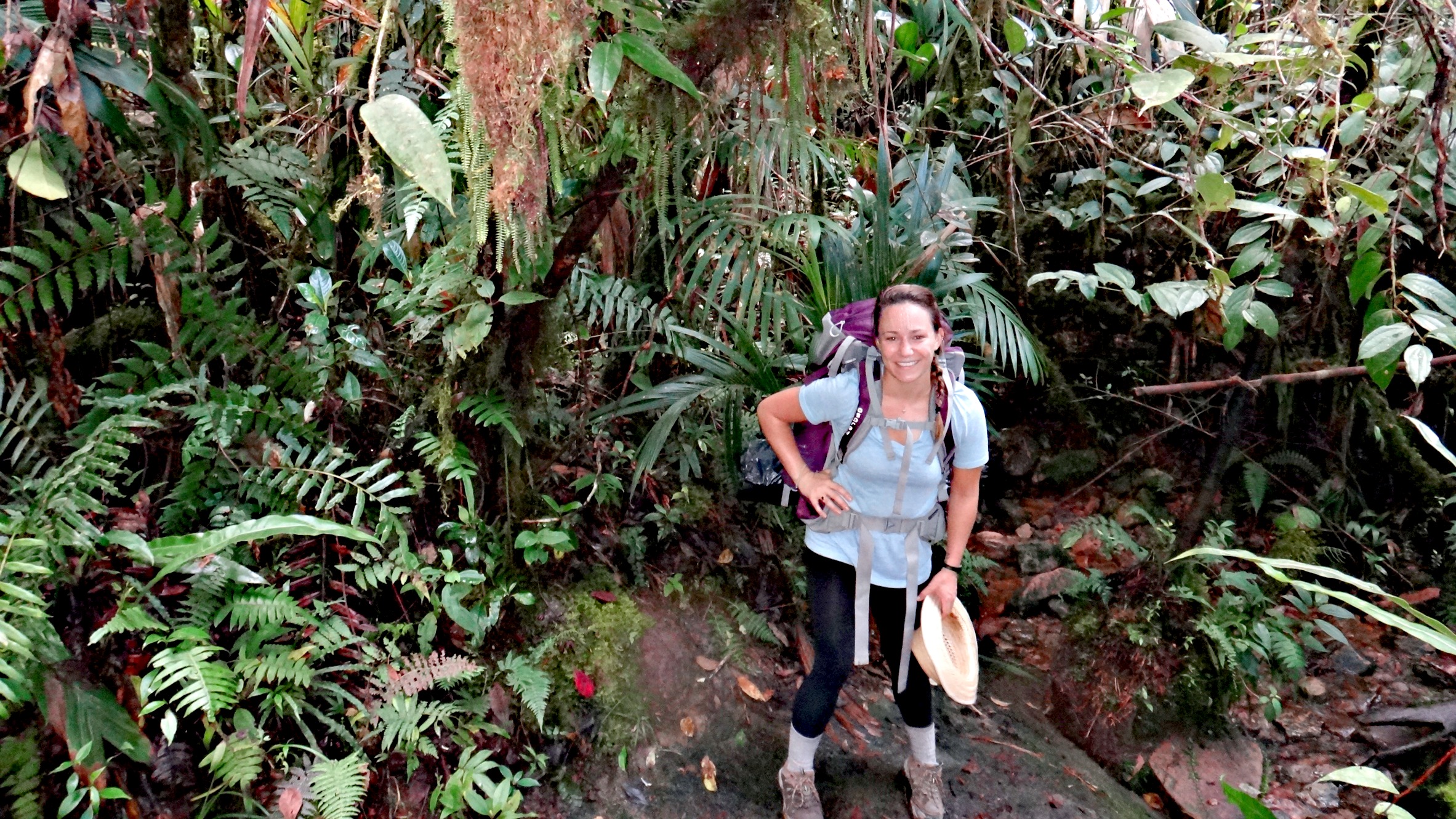
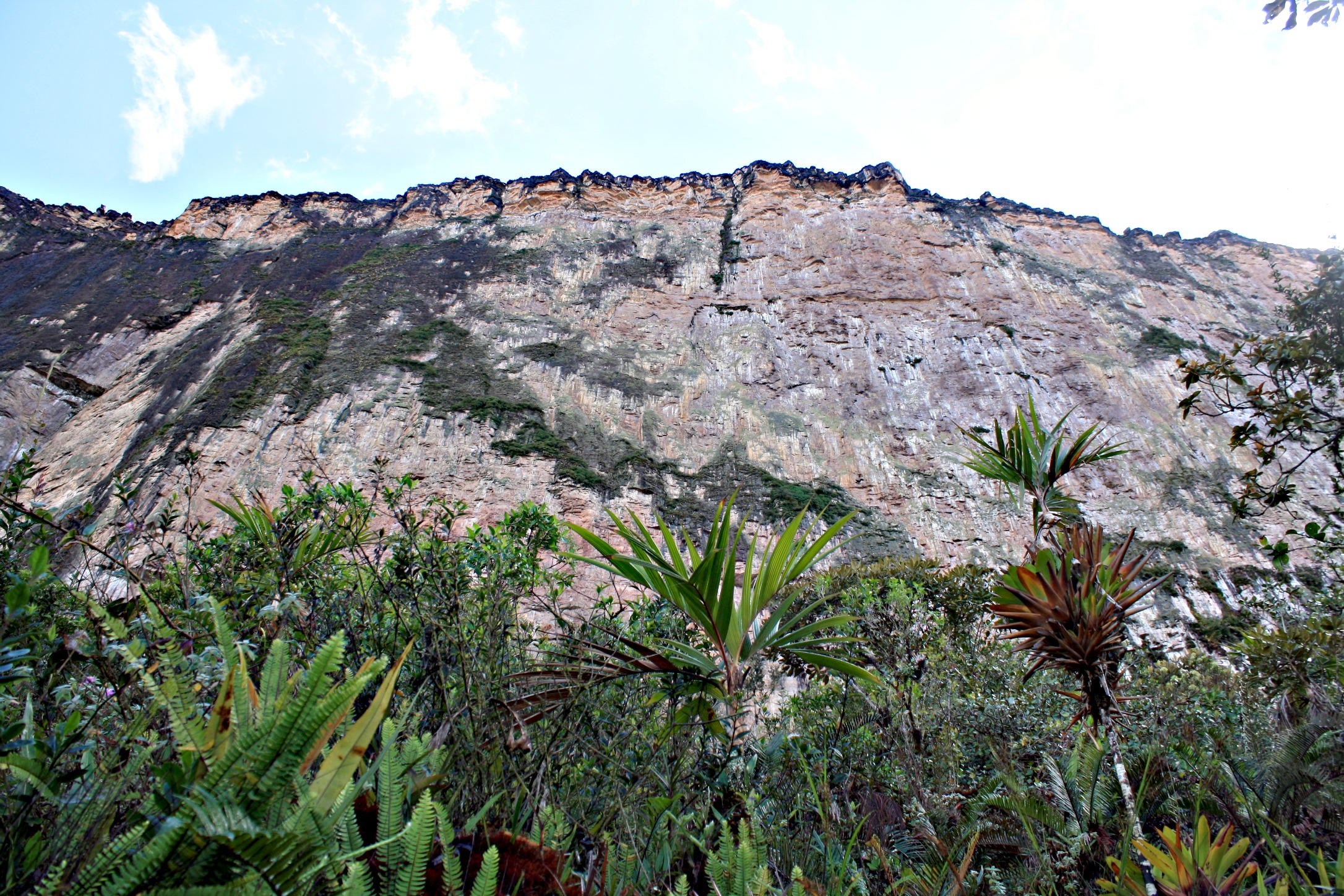
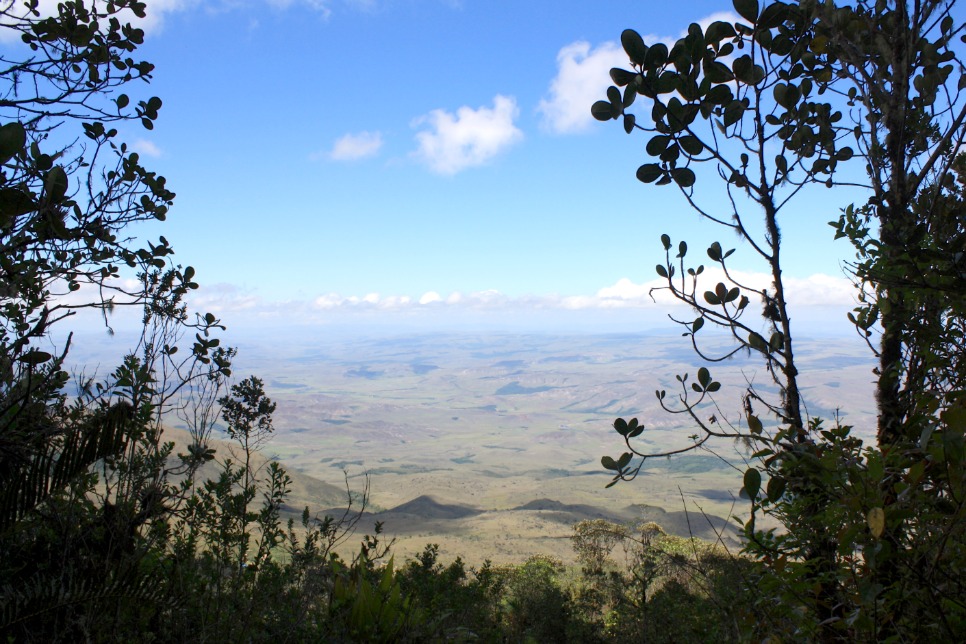
Our climb was definitely slowed further by the constant need to pause for photos. We just couldn’t believe what we were seeing, so it seemed necessary to bring back proof of our journey to convince family and friends it actually happened.
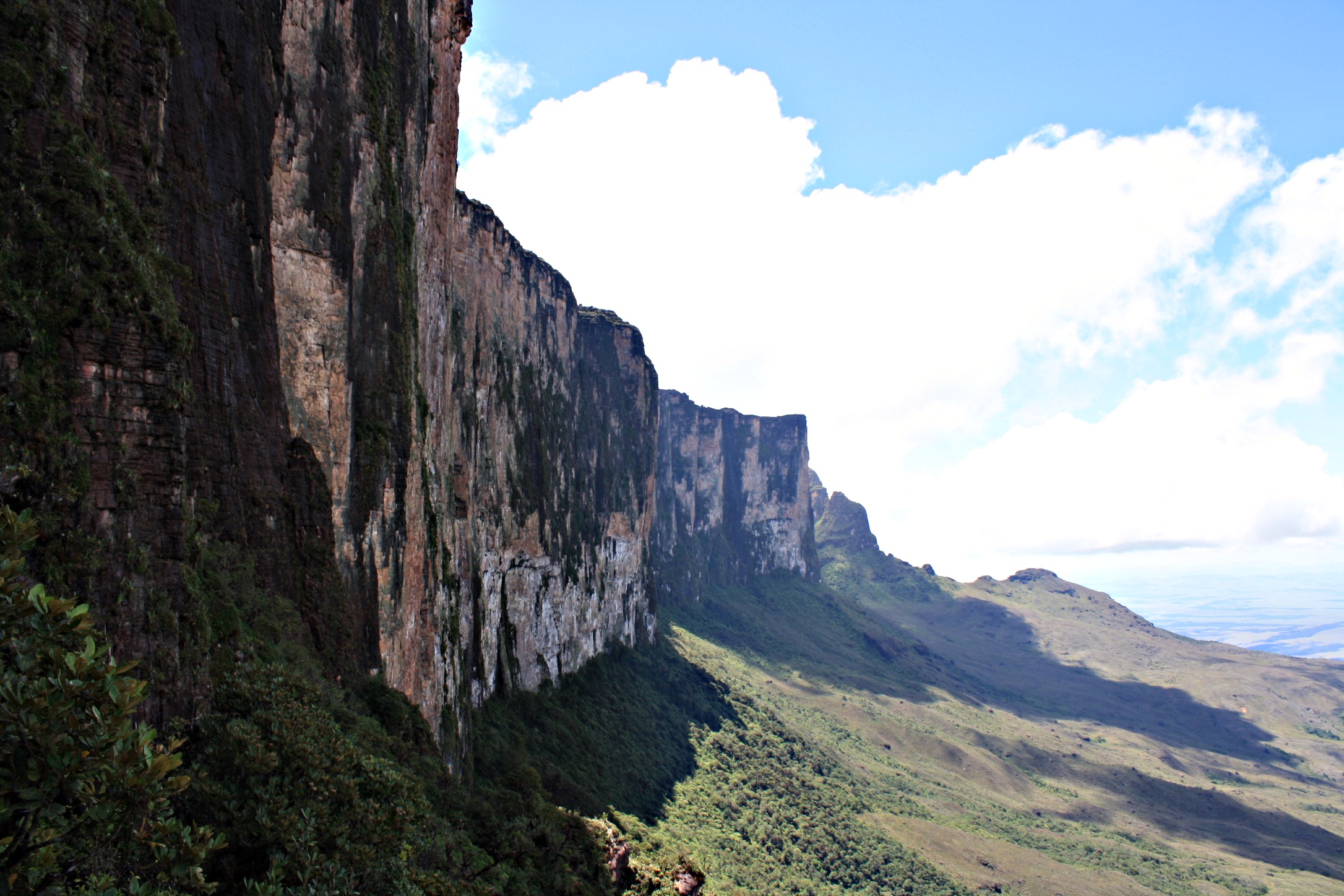
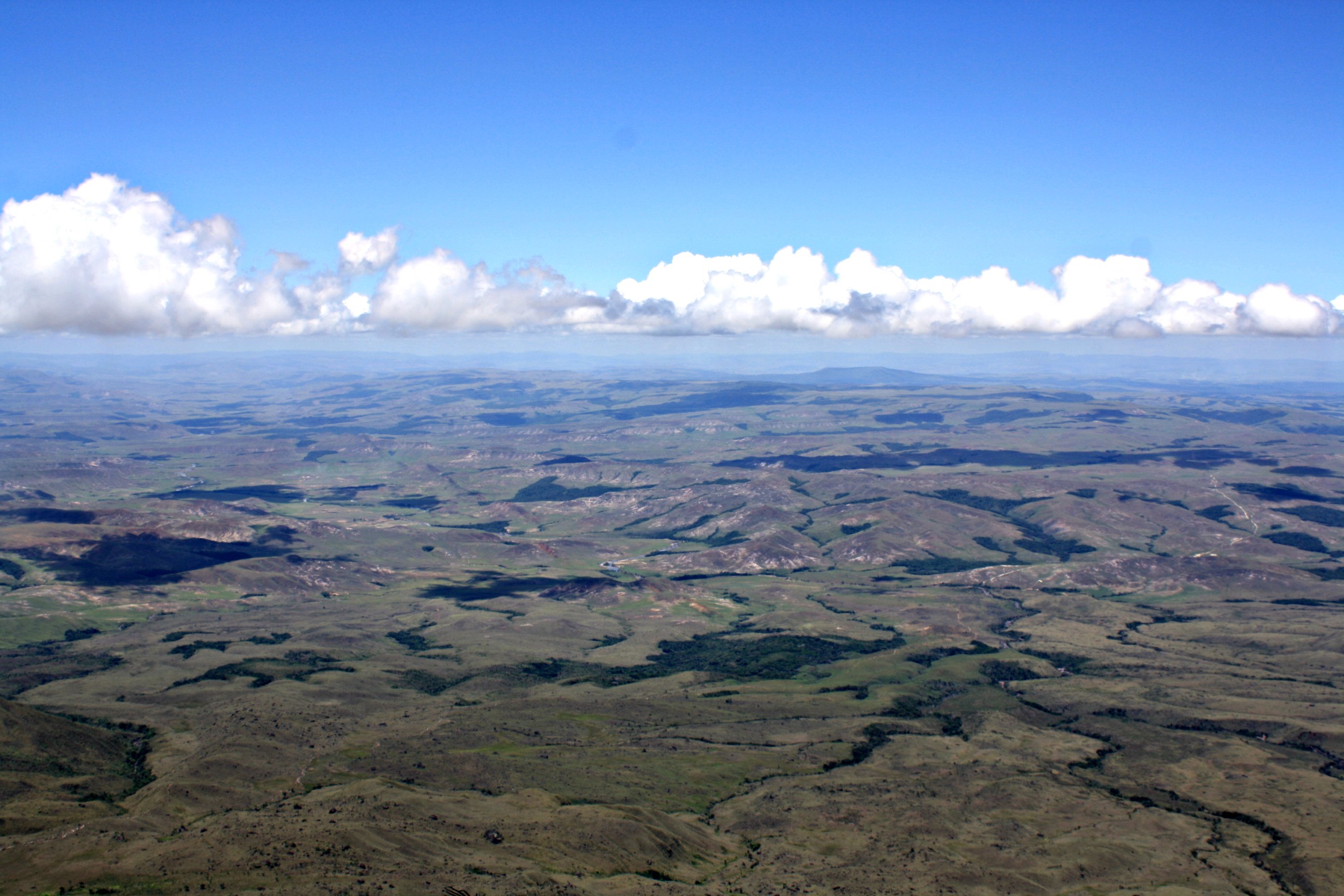
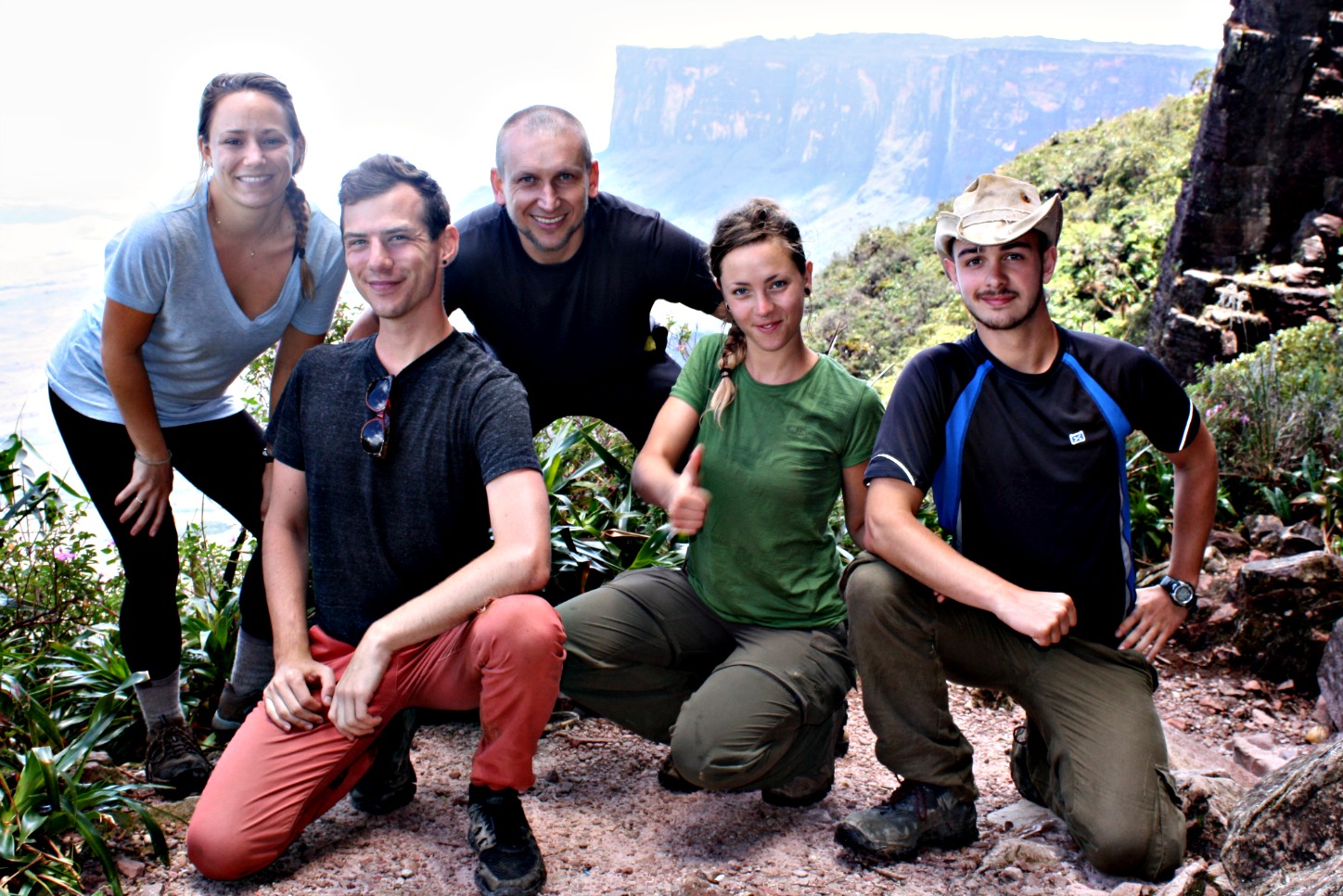
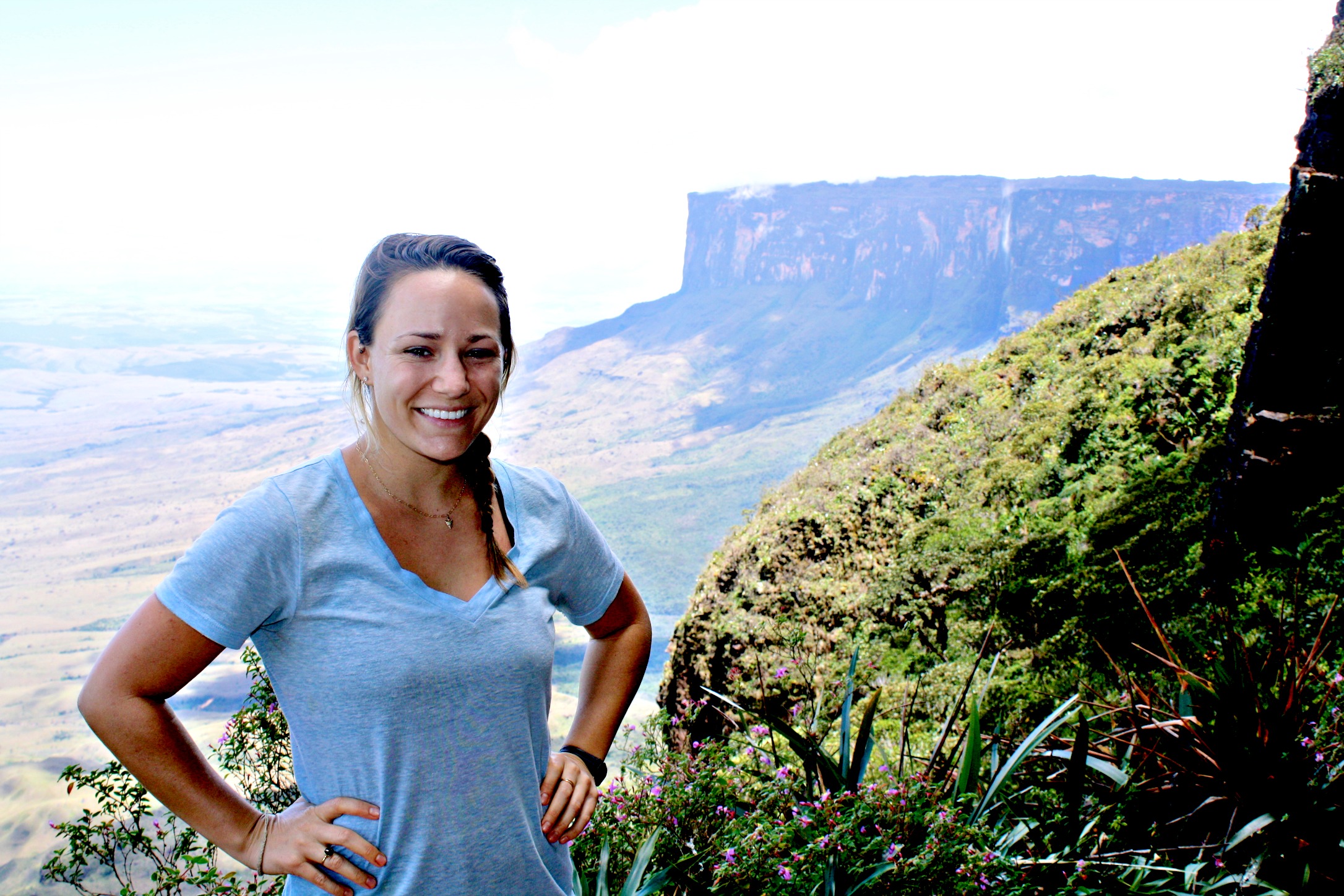
We exchanged apprehensive glances as we surveyed our final steep ascent, aptly named “El Camino de Lágrimas” (the Trail of Tears), and rallied for the last push to the summit.

My knees ached, I was drenched in sweat, and my caffeine headache had progressed to near migraine-level pain (still no coffee). The last ascent took every ounce of determination I could muster. It was more climbing at this point than hiking and required the use of my arms as much as my legs. I began using physics to my advantage and allowed the momentum of my backpack to carry my upper body up and over the towering boulders.
Light clouds rolled in and a light breeze picked up as I hoisted myself up to the flat, barren top of the mountain. Freeing myself from my sweat-drenched backpack as fast as my shaking hands would allow, I tossed it down and walked gingerly to the edge of the beast I had just conquered and surveyed my kingdom below. A maniacal laugh bubbled up from inside me and eventually gave way to a triumphant howl. I felt equal parts victorious and incredulous.
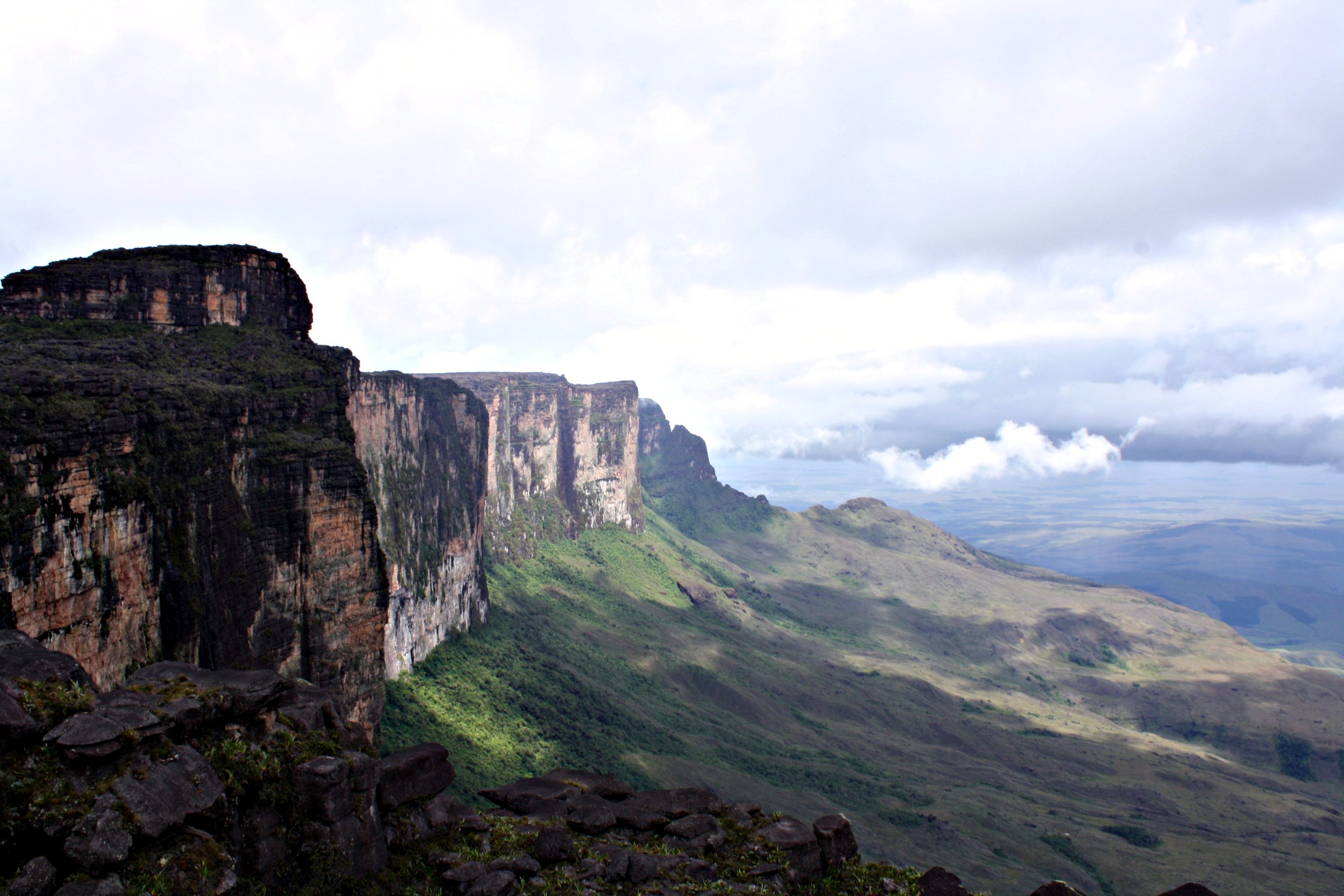
As the rest of the group summited, we gathered to congratulate each other on our accomplishment. Our guides provided us with a welcome lunch and we were left to recuperate and marvel at our unbelievable surroundings for a bit before heading to camp.
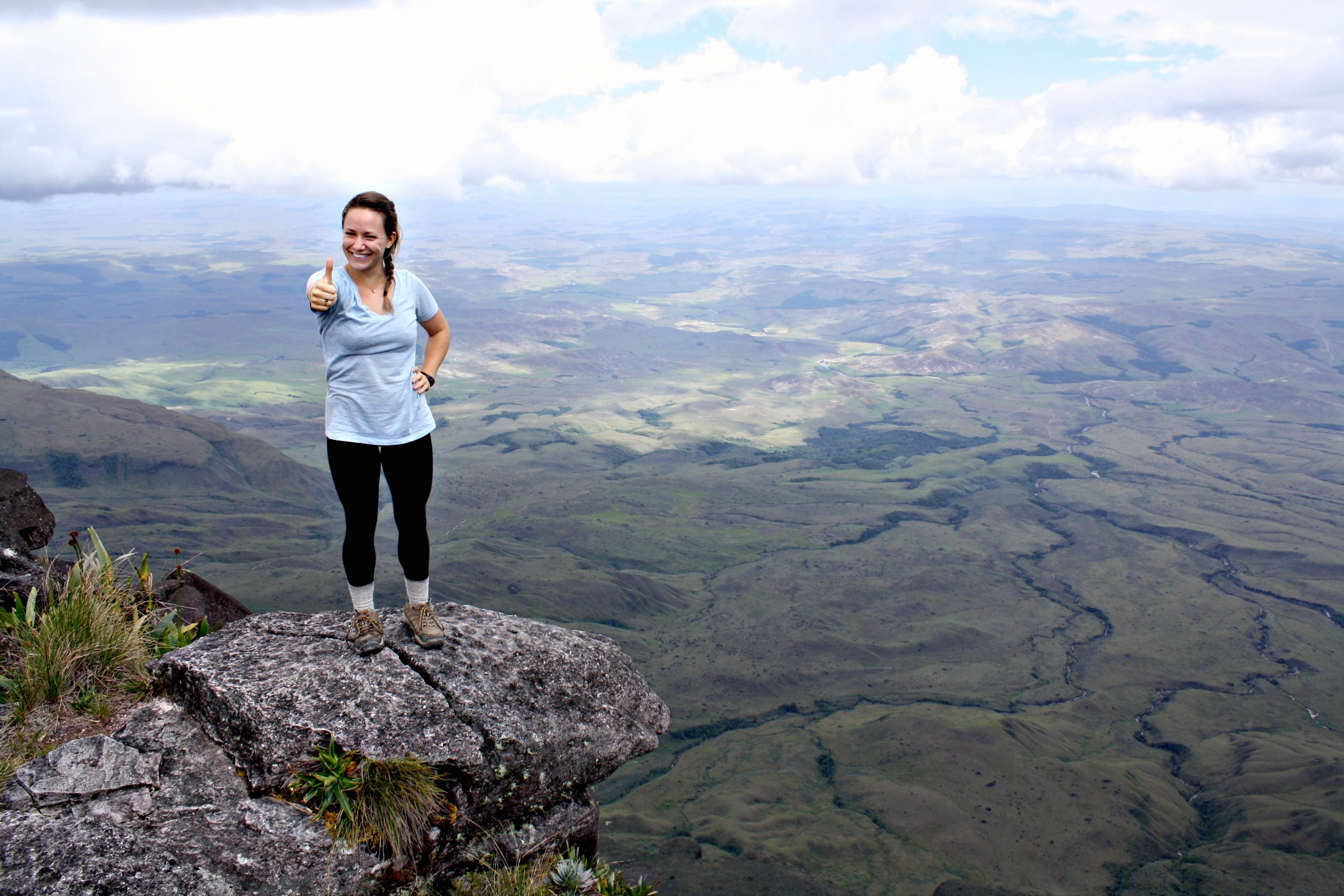
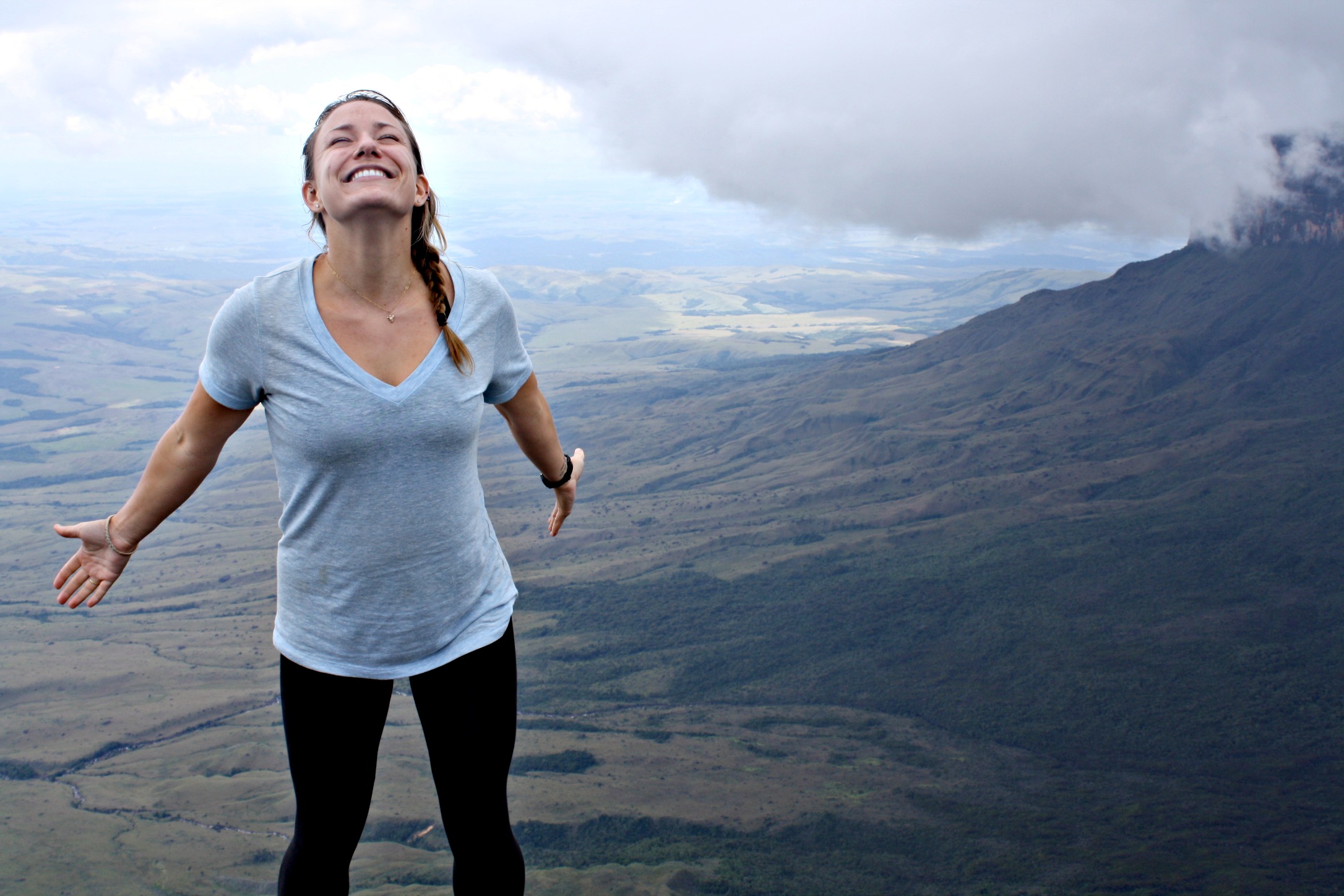
The adventure on Mount Roraima doesn’t end there! To be continued in Part 2…



